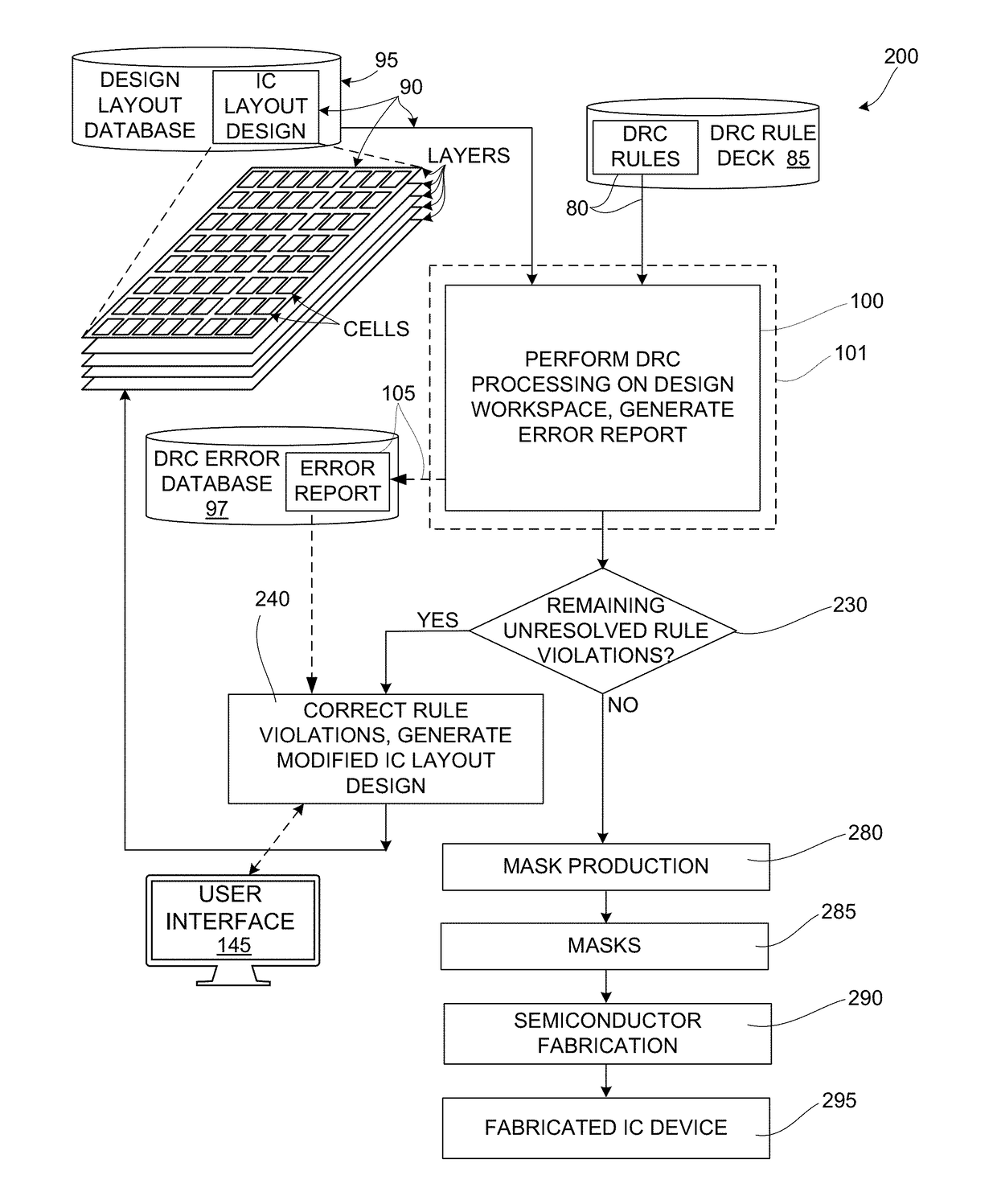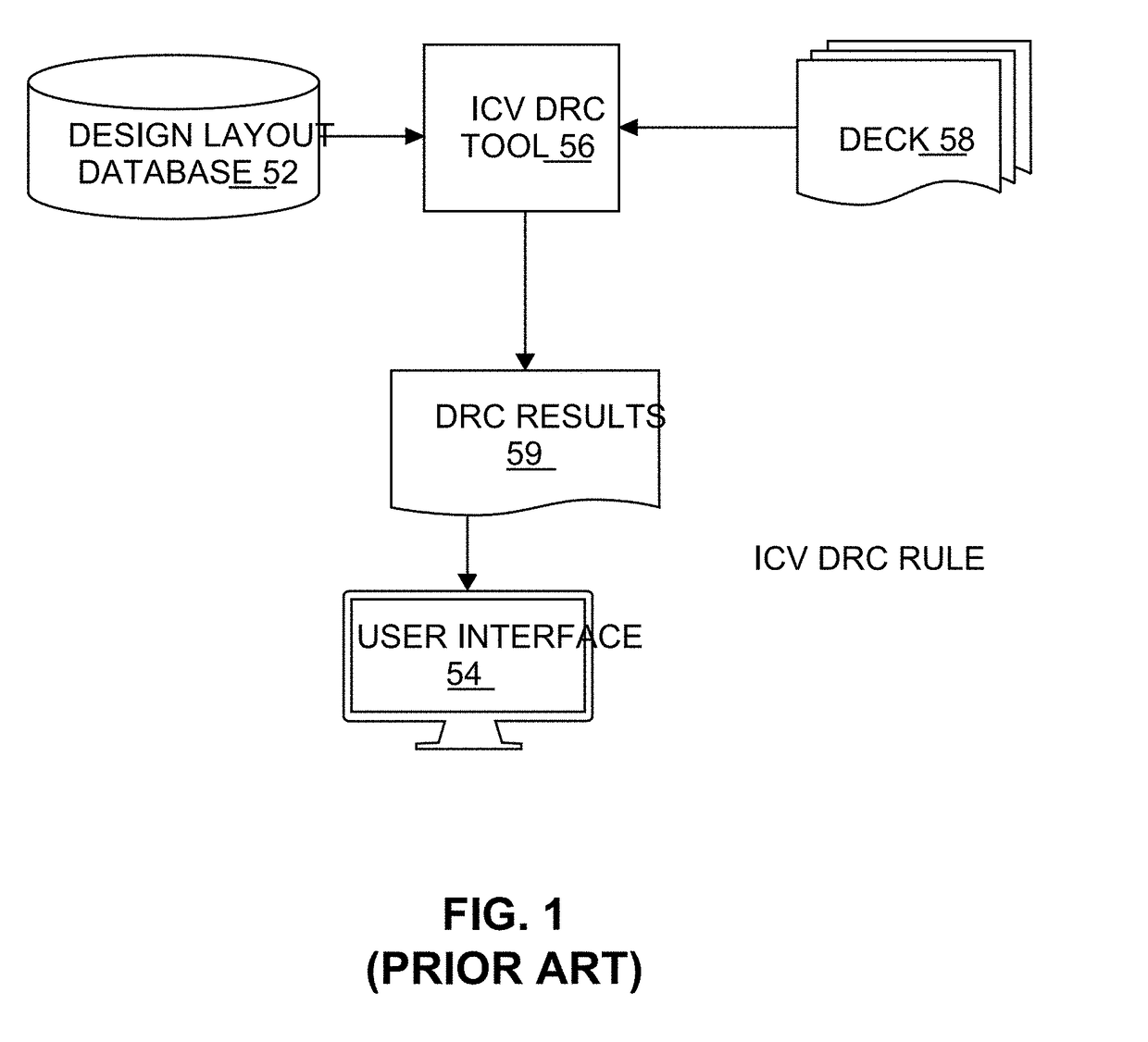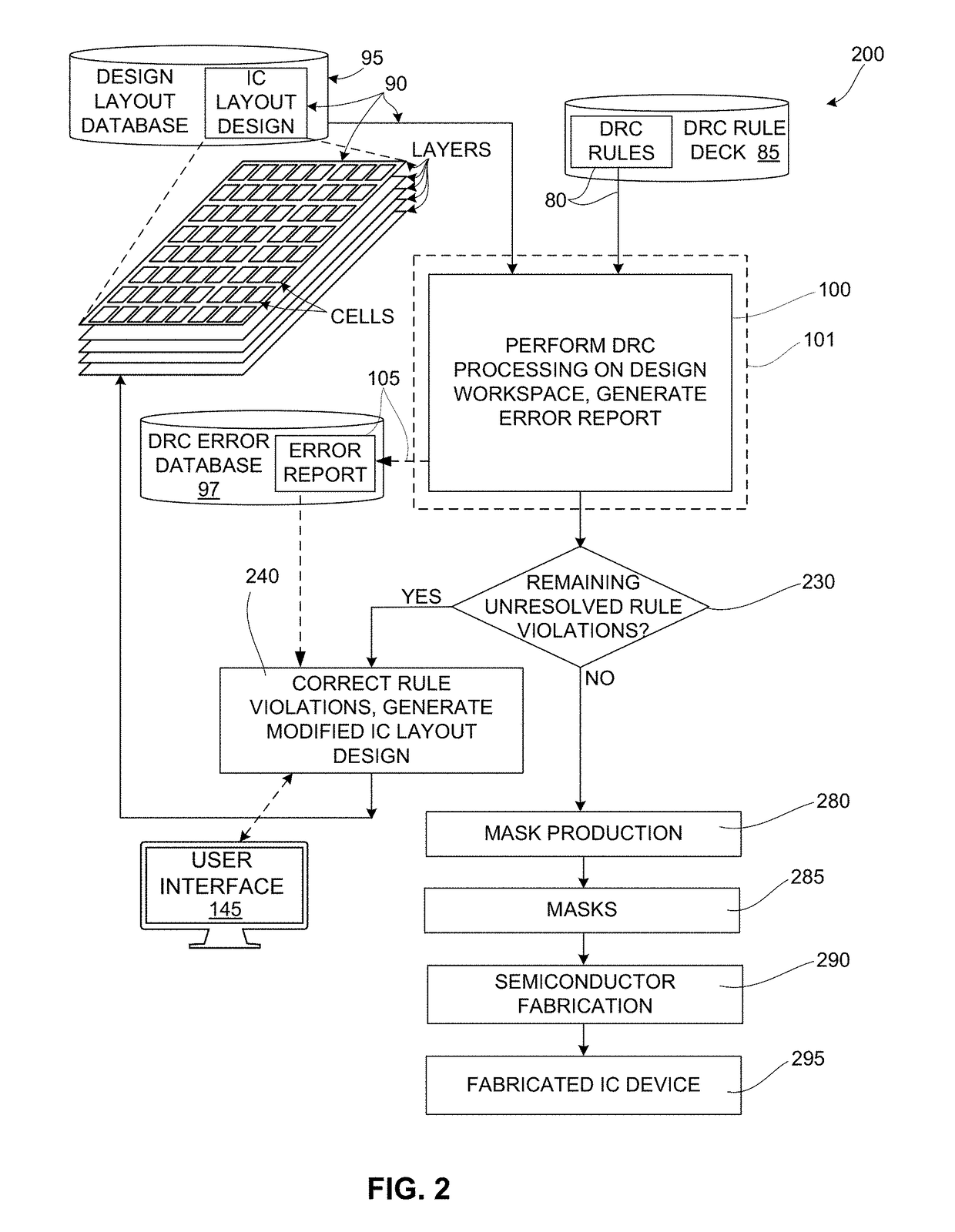DRC Processing Tool For Early Stage IC Layout Designs
a drc processing and early-stage technology, applied in the field of drc software tools, can solve the problems of ic designer/sellers missing important market windows, long process, and inability to meet the requirements of early-stage drc processing, and achieve the effect of maximizing the number of rules checks, improving the quality of drc processing, and facilitating the processing of early-stage dr
- Summary
- Abstract
- Description
- Claims
- Application Information
AI Technical Summary
Benefits of technology
Problems solved by technology
Method used
Image
Examples
Embodiment Construction
[0031]The present invention is directed to an improved DRC tool that is optimized for efficient DRC processing of early-stage (dirty) IC layout designs. The following description is presented to enable one of ordinary skill in the art to make and use the invention as provided in the context of a particular application and its requirements. In one embodiment the improved DRC tool is generated by way of modifying a conventional signoff-type DRC tool to include one or more of the novel processing techniques to dramatically speed up early-stage DRC processing, such as: automatically terminating the processing of DRC rules that generate large numbers of errors and consume large amounts of machine resources; automatically excluding bad cell placements so they are not checked; automatically determining and running basic DRC rules first and, based on intermediate results, deciding to complete the rest of the DRC rules on all layers, complete the remaining rules on a subset of layers, or com...
PUM
 Login to View More
Login to View More Abstract
Description
Claims
Application Information
 Login to View More
Login to View More - R&D
- Intellectual Property
- Life Sciences
- Materials
- Tech Scout
- Unparalleled Data Quality
- Higher Quality Content
- 60% Fewer Hallucinations
Browse by: Latest US Patents, China's latest patents, Technical Efficacy Thesaurus, Application Domain, Technology Topic, Popular Technical Reports.
© 2025 PatSnap. All rights reserved.Legal|Privacy policy|Modern Slavery Act Transparency Statement|Sitemap|About US| Contact US: help@patsnap.com



